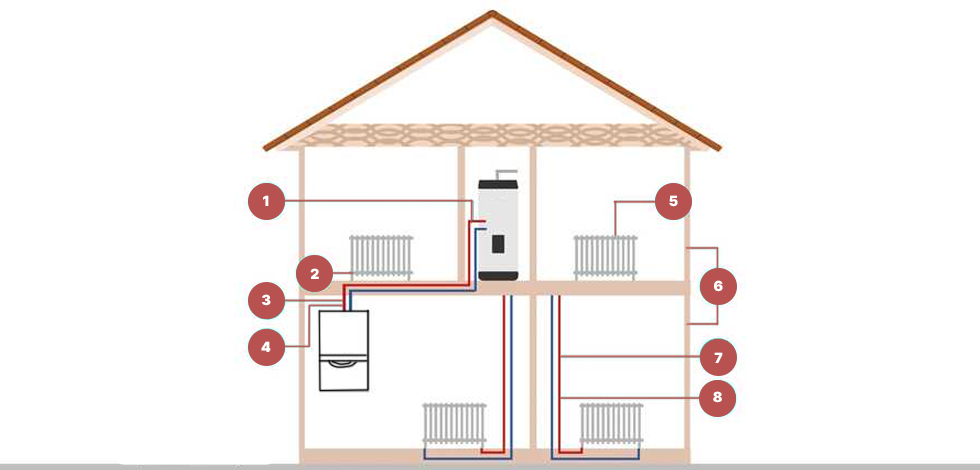In the ever-evolving landscape of home heating, the past 12 months have witnessed a massive shift, with low-temperature heating emerging as a top priority for both the Government and heating installers alike. The reason for this transformation can be traced back to June 2022, when Building Regulation Part L underwent a crucial update. The primary objective was to elevate the minimum standard for carbon emissions in new homes by an ambitious 31%, setting the stage for a broader initiative known as the Future Homes Standard. This comprehensive plan aims to achieve a substantial 75% reduction in emissions by 2025.
Transition to Low-Temperature Heating:
To align with these ambitious targets, heating engineers now find themselves at the forefront of change, tasked with installing low-temperature heating systems. The most important part of this adaptation lies in reducing the maximum flow temperature from the conventional 80°C to a more sustainable 50°C – a departure from the norm for many gas engineers accustomed to higher temperatures.
Scope of Regulations:
Currently, these stringent regulations apply exclusively to new build homes and existing properties undergoing a heating system overhaul. However, industry experts anticipate a progressive tightening of these standards, extending their reach to encompass all properties in due course.

Image Above Key:
1. Minimum insulation thicknesses apply to all pipes connected to hot-water storage. A pipe with an internal diameter of 10mm must have insulation at least 5mm thick, a 22mm pipe needs 10mm insulation, and a 28mm pipe requires 15mm insulation
2. TRVs are required on every install (excluding heat pump installations where volume for defrost is required)
3. The maximum flow temperature of 55°C applies to new and fully replaced systems
4. All primary hot water pipes for domestic hot water must be insulated
5. Secondary central heating pipes must be insulated when passing through voids
6. If the total floor area is 150m² or more, multi-zoning is required
7. Primary central heating pipes must be insulated when passing through voids
8. All central heating and primary hot-water circuits should be thoroughly cleaned, flushed out and dosed with inhibitor on every install according to BS 7593
The Gas Boiler Dilemma:
Notably, these regulations coincide with the Government’s well-publicized ban on new gas boilers. Initially slated for a phased implementation, the plan was to eliminate gas boilers in new homes by 2025 and enforce a complete ban by 2033. In a recent Conservative Party Conference Speech, Prime Minister Rishi Sunak announced an extension of this deadline to 2035. This extension aims to provide both the industry and the general public with additional time to make the transition to low-temperature alternatives, marking a pivotal moment in the journey toward sustainable heating solutions.
As the push for environmentally conscious practices gains momentum, the realm of heating undergoes a transformative shift towards low-temperature systems. The regulatory landscape continues to evolve, ushering in a new era where energy efficiency and reduced carbon emissions are non-negotiable priorities. Navigating this change requires a collective effort from heating professionals, policymakers, and homeowners alike, as we work towards a future defined by sustainable heating practices and a greener, more eco-friendly world.
It may only be a few years since low carbon heating really hit the headlines, but many heating engineers have actually been working with them for decades! Possibly without even realising it. For instance, Underfloor Heating Systems have always run on lower flow temperatures than traditional Radiator systems. Underfloor heating is a proven system low-temperature technology that home owners have embraced thanks to its luxurious comfort, warmth and efficiency and one whose benefits are now being recognized at the highest levels. Underfloor Heating is far more efficient than a radiator-based system because it transforms the entire floor of a building into a giant heat emitter. This gives the system a much larger surface area to emit heat from and so the system itself can run at a lower overall flow temperature without compromising the heat output for the occupants.




